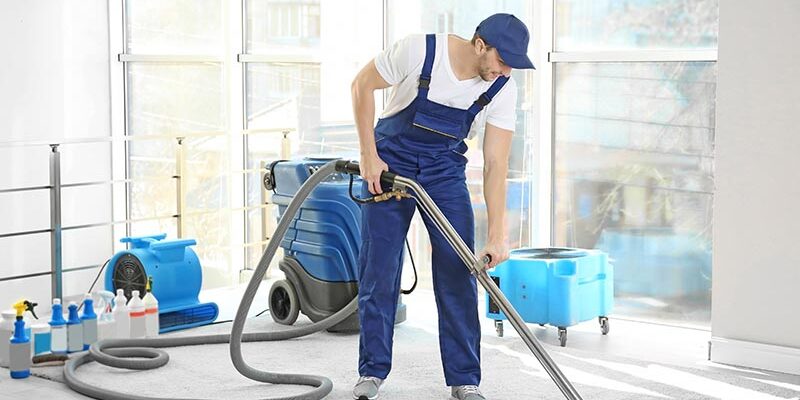The Heat on Heat

In 2006, the state of New York released its Green Cleaning Guidelines intended to help make the state’s schools greener, cleaner, healthier and safer, as well as limit building occupants’ exposure to potentially toxic cleaning chemicals.
For many, the guidelines were met with considerable approval. This was a major step in greening American schools, and because New York tends to influence other areas of the country, it was widely believed that other states and communities would follow suit and get on the green cleaning bandwagon, which several have.
Many of the guidelines are practical and simply common sense. For instance, cleaning chemicals selected must be certified by a recognized certification organization such as the Design for the Environment (DfE) program run by the U.S. Environmental Protection Agency, Green Seal™, or EcoLogo®.
However, when it comes to carpet cleaning, specifically carpet extraction, some of the guidelines do not seem practical, at all. In fact, to many in the carpet cleaning industry, they do not make any sense whatsoever.
The key issue is the use of hot water, or lack thereof. The guidelines require that carpets be extracted using only cold-water systems. They also provide a number of reasons for this requirement and a discussion of how the state made this determination.
While some of these arguments do hold water, so to speak, others are on shaky ground. Addressing some of the reasons cited in a point/ counterpoint format will allow you the opportunity to make up your own mind.
Case and point
Cold water does not cause severe burns the way hot water can.
Cold water will not cause a severe burn. But, although it could happen, I am unaware of an experienced carpet cleaning technician who has suffered a burn of any type from hot water after it has been released from the cleaning wand or tool before it strikes the carpet.
Hot water requires the use of a costly heat source — a building water heater — making it not only costly to operate, but likely fueled by nonrenewable resources, which would contribute to greenhouse gas emissions.
As all carpet cleaning technicians know, hot-water extractors generate their own heat. A portable machine may have an in-line heating system. And for a vehicle-powered truckmount, the vehicle’s motor provides both heat and power.Heating the water in a heat exchanger truckmount works by capturing heat from other sources (engine, blower, radiator, etc.) that already are being powered by the vehicle.
The hot water created by a truckmount does not require the use of any additional resources beyond those required to run the truckmount. No matter which system is used, the building’s hot-water heaters are not involved.
While not specifically noted in the guidelines, a response to this rebuttal is usually that even if the facility’s water heater is not accessed, extra fuel and energy are still required to heat water no matter which type of hot-water extractor is used. This is true, but only to an extent.
Yes, energy is needed to heat the water. However, heat improves the effectiveness of the cleaning chemicals and the carpet cleaning process overall. This means that using a hot-water extractor can help reduce cleaning times so that, even if it takes more energy to heat the water, with the job done quicker, the added fuel needs are likely negligible.
Cold-water detergents are now available that make cleaning with hot water unnecessary.
Hotter cleaning solution increases the chemical molecular activity of both the cleaning chemical being used and the water. This has been confirmed scientifically by the Argonne National Laboratory in “Hot versus Cold Water for Cleaning” and in other studies.
The increased chemical activity found with hot water also means the technician will need to use fewer chemicals to clean.
“Even without soap, small amounts of grease will dissolve in water,” says Dr. Michael Berry, author of the book Protecting the Built Environment: Cleaning for Health. “[But] the amount increases in hot water, sometimes ten-fold.”
While some carpet cleaning solutions may be formulated to work effectively when used with cold water, the fact is most still would work even better if mixed in hot water.
Hot water causes soils to melt and spread, making them harder to remove and causing them to cling to colder surfaces within the carpet.
A common response among carpet cleaning technicians who hear this point is, “Say what?!”
The guidelines are somewhat ambiguous, and it is not always clear if they are discussing hard-surface floor care, carpet care or cleaning in general. However, this point, in relation to carpet cleaning, does not make clear what “colder surfaces” the guidelines refer to.
With an effective hot-water carpet extractor, the heated water is injected deep into carpet fibers under pressure. There are no “colder surfaces” of the carpet when using a hot-water extractor.
As to the melting and spreading of soils, hot water does not necessarily spread soils, but it does help melt grease, oil and similar soiling. This makes these substances easier — not more difficult — to remove. As a matter of fact, this is one of the most significant benefits of using a hot-water system.
The bottom line
We started our discussion by saying two of the primary goals of the New York state Green Cleaning Guidelines are to help make the state’s schools cleaner and healthier. When it comes to carpet cleaning, if hot water improves the cleaning effectiveness of the extraction process, then it would appear that using hot-water systems would help make facilities cleaner.
As to making cleaning healthier, Berry states that “it is far more important to use [heated] water in the pursuit of health protection” than to be concerned about whether using hot water is green or not. In fact, it is widely believed that protecting health is one of the most important arguments for the use of hot-water carpet extraction.
To many, it seems evident that the New York Green Cleaning Guidelines are due for a reexamination, at least when it comes to carpet cleaning. While the guidelines were produced with the best interests of the citizens of New York in mind and with the goals of protecting health and reducing cleaning’s impact on the environment, some points simply do not make sense.
“If someone is able to show me that what I think or do is not right, I will happily change, for I seek the truth,” wrote Augustus, the founder of the Roman Empire. A reexamination of the guidelines may reveal some truths that the authors did not realize at the time.
R. Doyle Bloss has been a part of the cleaning and restoration industry for more than 30 years. He serves as the marketing and chemical brand manager for HydraMaster and U.S. Products in Mukilteo, WA. He has headed up the two largest training programs in the industry, assisted in developing complete chemical lines for three leading manufacturers, and been honored and rewarded for his innovative programs that build bridges throughout the cleaning and restoration industry. He may be reached through his company website at www.USProducts.com.












